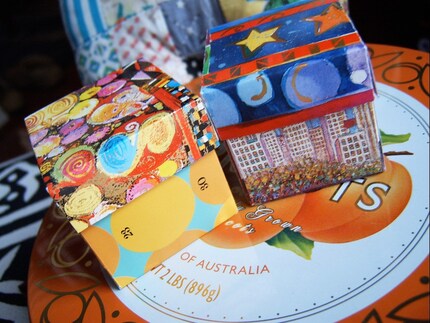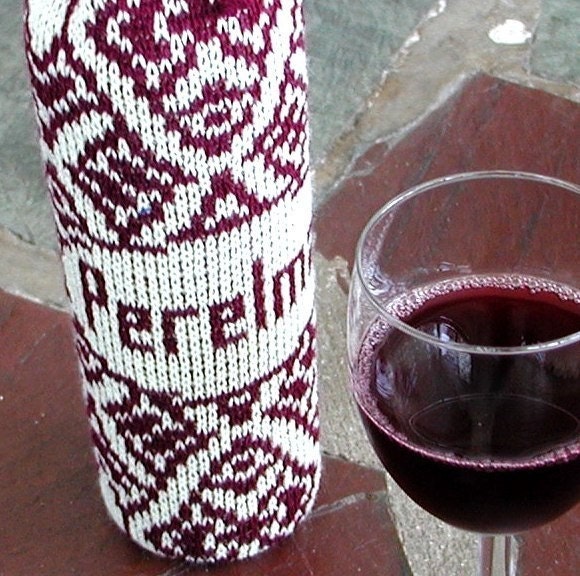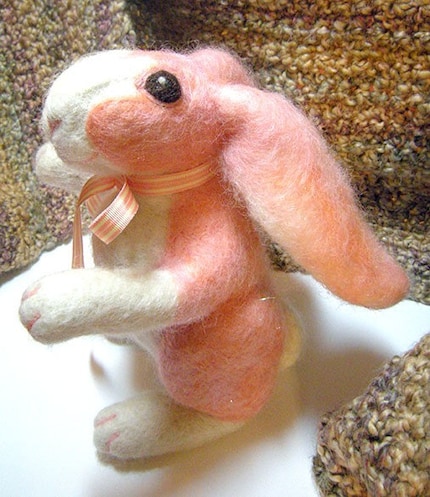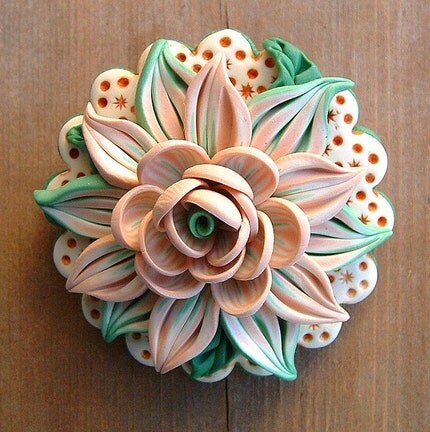When I’m reading a blog post and run across a crafting how-to piece, I feel as if I’ve been given a special gift. I sit back and ask myself, “Really? I get this information for free?” That’s the power of a tutorial.
Tutorials often teach you something unexpected, something that is potentially useful just for you, or they provide inspiration for a next step you are considering. After I read a post on BBEST artist Liz Plummer‘s blog about How to create a concertina book, for example, I was inspired to purchase several books about bookmaking. Liz also writes about her Gocco printing process on her blog, as evidenced by the moleskin journal below that includes a Gocco-printed cover.
The writer/artist who writes tutorials is in an especially good position to create a sense in the reader’s mind that he or she is an expert about the topic at hand, someone who can be trusted, and possibly someone whose work you might wish to explore further. In short, tutorials clarify who the person is behind the writer’s voice, and provide an indirect method of promoting the artist.
When you read Suz of whimseys‘ Short Tutorial on Eco Cloth Shopping Bag, you’re impressed right away by her concern about the earth, and will wish to browse through the products in her shop, which (like the shopping bag in her tutorial) are also made of fabric.
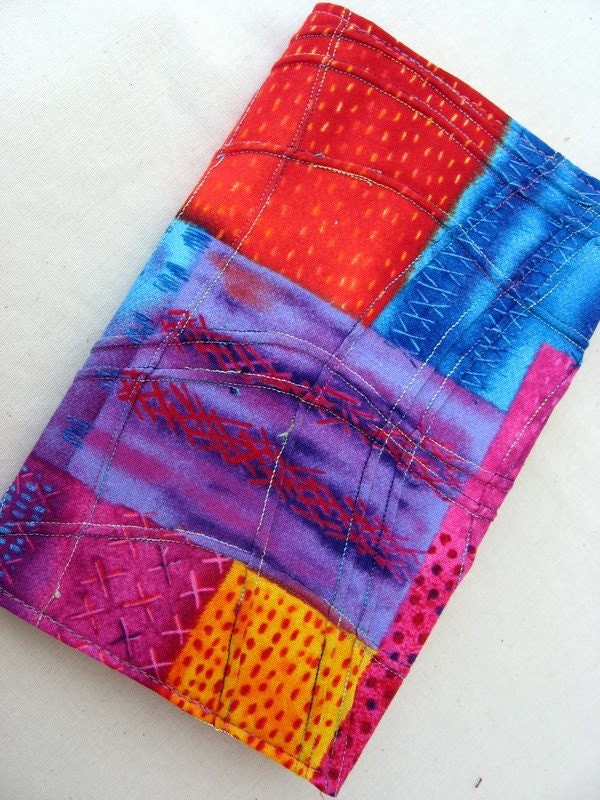 Sherrill Kahn Fabric Bookcover Dayplanner
Sherrill Kahn Fabric Bookcover DayplannerJournal Book Cover, by whimseys
While there are many indie tutorial sites on the Web such as Craftster, CraftStylish and Craft, the tutorials on these sites differ from the tutorials found on blogs. A blog tutorial tends to make you feel that you have a personal connection with the writer, not that you’re reading an encyclopedia of instructions. If you have a question or a comment, you can communicate directly with the writer and be reasonably certain that your response will be read in a timely fashion, and that any questions you have will be answered just as quickly.
The writer of a blog tutorial has several decisions to make, however, before posting. These include the focus, the fiber and the format of the tutorial:
- Focus. What is the reason for the tutorial? Does the tutorial give the reader a taste of what is in the artist’s shop, but on a simpler scale? Does the tutorial describe a process that creates curiosity about the artist’s products? Does the tutorial establish or confirm the artist’s expertise in a particular area? The purpose of the tutorial may be answered by one or several of these questions, but the writer/artist needs to establish a business reason for sharing his or her expertise through a how-to post. Moreover, to justify its existence, that post actually needs to be useful to the reader in some way. Because many people do not realize the extent of design effort and manual dexterity that go into machine knitting, for example, Barb of Blazing Needles cleverly educates her readers about that process in a series of blog posts, beginning with Machine Knitting – Part 1.
- Fiber. The fiber of a tutorial relates directly to the content of the post. What is it about? Does the post provide step-by-step directions to produce a product? Does it describe a process? Does it give an historical overview of a specific art or craft? Does it provide general information that can become a jumping-off point for the reader to explore the topic further? Again, the fiber of the tutorial may consist of the answers to one or more of these questions, but it affects the approach the writer/artist takes to the topic, and ultimately the format. When Kimberly of thewildhare writes about her felted rabbit-making process, for example, in Where is the brown bunny? you will find the process so intriguing that you cannot resist visiting her shop to see her cute rabbits.
- Format. The format of a tutorial is determined by both the focus (purpose) and fiber (content) of the post. In its purest form, a step-by-step tutorial includes numbered or bulleted instructions, as well as clear photos. A tutorial that describes a process follows a logical sequence from beginning to end, with photos, but is a little more general. A post with an historical perspective will take the reader through a timeline of stories, again with photos to illustrate significant points. A general information post often provides links to useful information so that readers can take charge of the next step in their learning. Alysa of Alysa Merle Handcrafts, for example, not only describes the process of making plarn (plastic yarn) bags on her blog, but she also writes articles for Helium, establishing herself as a credible expert in this area. Her blog includes a link to Creative earth-friendly crafts, which educates her readers about the process she uses to crochet recyclable totes from plarn. The article also includes suggestions for how to explore this topic further.
Blog tutorials provide a perfect opportunity for writer/artists to inform readers about their creative process, highlight their work, and create a sense of their trustworthiness. With careful attention to focus, fiber and format, these tutorials become wonderful “freebie” gifts for their readers, and highly effective marketing tools for the artist.
© 2009 Judy Nolan. All rights reserved. Please note that the images in this post are owned by the artists and may not be used without permission. Simultaneously published at http://boomersandbeyond.blogspot.com.


